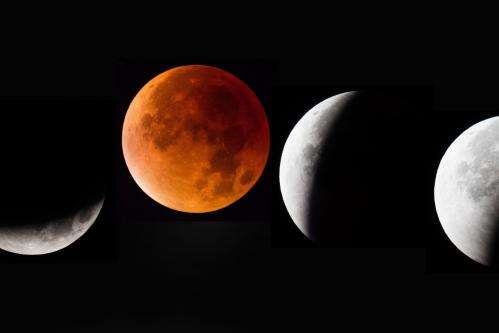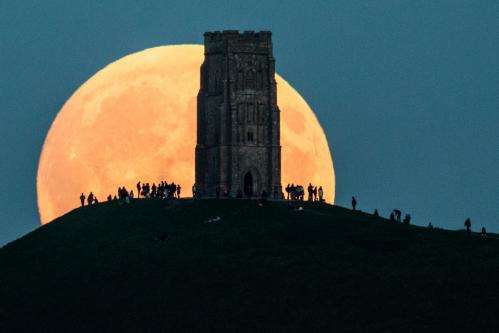January 29, 2018

In the early hours of January 31, the moon will do something it hasn’t since 1866. A supermoon, blue moon and lunar eclipse will coincide for a rare and spectacular astronomical feast.
Our faithful satellite will shine big, bright—and red.
Supermoon
January 29, 2018

In the early hours of January 31, the moon will do something it hasn’t since 1866. A supermoon, blue moon and lunar eclipse will coincide for a rare and spectacular astronomical feast.
Our faithful satellite will shine big, bright—and red.
Supermoon
The moon doesn’t orbit the Earth in a perfect circle, which means it sometimes sits closer to our planet than usual. When the moon’s closest approach—or “perigee”—coincides with a full moon, it can look bigger and brighter. This is known as a “supermoon,” but the technical term is “perigee full moon.”
“In general, perigee full moons can be up to 14 percent bigger than apogee full moons, and up to 30 percent brighter,” NASA planetary geologist Sarah Noble explained to Newsweek. “The difference in size is very difficult for our eyes to discern, but the moon will probably be noticeably bright.”
January 31 is the last chance you will have to see a supermoon this year. To witness the supersize space rock in all its glory, look to the skies just after sunset. The lower the moon sits in the sky, the larger it appears because of something called the "moon illusion."
Blue moon
“Blue moon” has come to mean the second full moon in a calendar month. Sadly it doesn’t actually shine blue, but it is an interesting quirk.
January has already had one full moon so far this month. Not as rare as you might think, the last blue moon occurred in July 2015. Spoilt for blue moons this year, we will also see one on 31 March.
Lunar eclipse

“Blood moon” refers to a lunar eclipse, where the satellite will glow a spectacular red for many viewers.
The sun, Earth and moon will line up in such a way that our planet cuts off the moon’s sunlight supply. It will drift into the Earth’s shadow and begin to glow a warm, orange-red as light passes through the Earth’s atmosphere.
How to watch the super blue blood moon

A lunar eclipse is visible to stargazers in the half of the world in darkness while this lineup takes place.
Astronomers in the western U.S., Australia and much of Canada, Russia and Asia will be able to see the moon in total eclipse. A partial eclipse will be visible across the eastern U.S., India, eastern Europe and Scandinavia. You can find out what kind of view you’ll have in your local area here.
If you don’t live in a total eclipse area, you can watch a live stream from the comfort of your home. NASA will broadcast live coverage of the super blue blood moon from 5.30 a.m. ET January 31. The Virtual Telescope Project will follow the event from Australia and the U.S., beaming the eclipse from 6.30 a.m. ET. The VTP will also stream the non-eclipsed super blue moon from Rome starting from 11 a.m. ET.
Courtesy/Source: Newsweek
















































































































